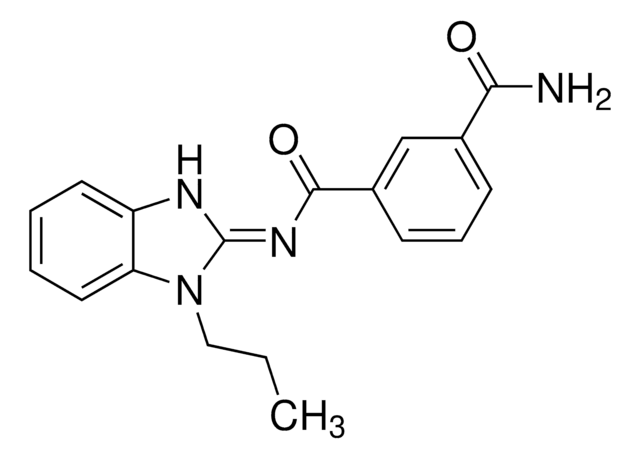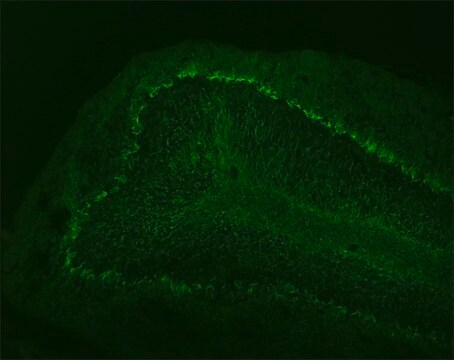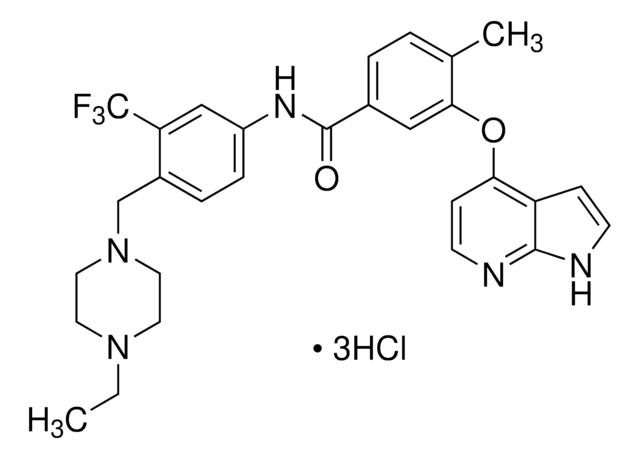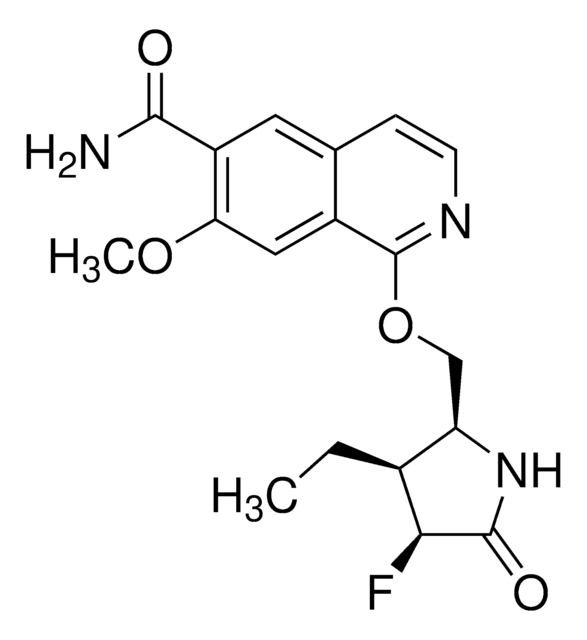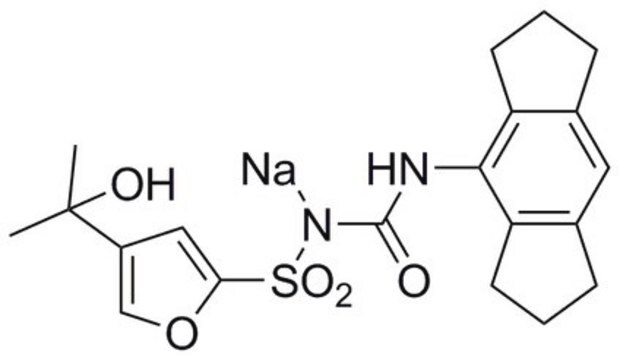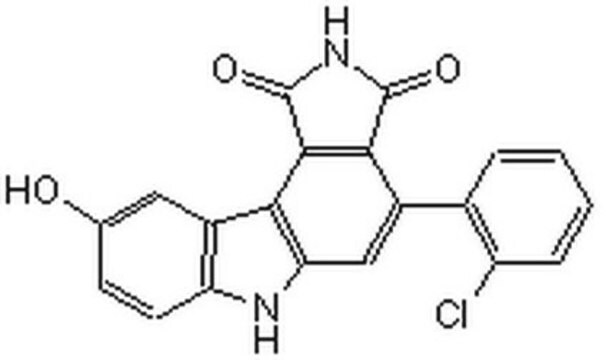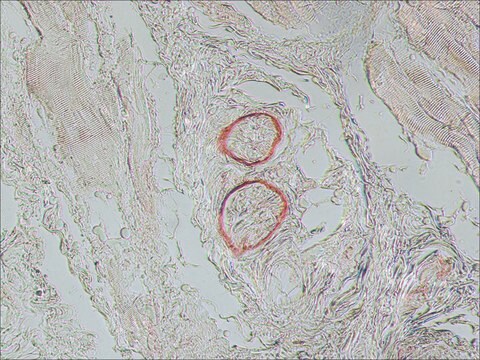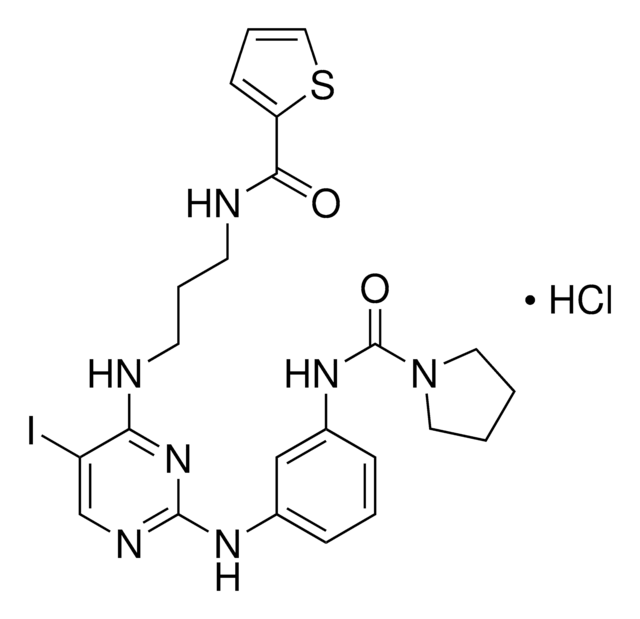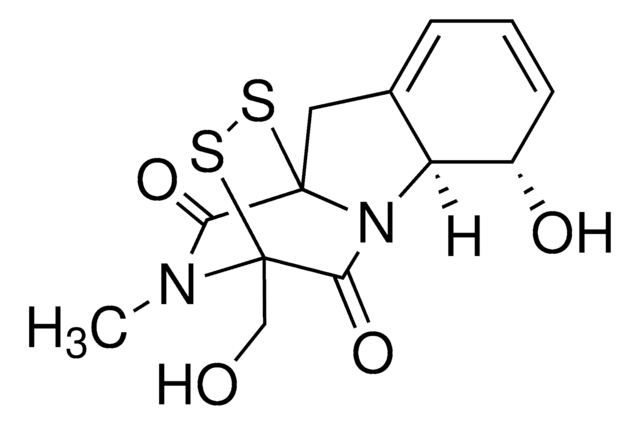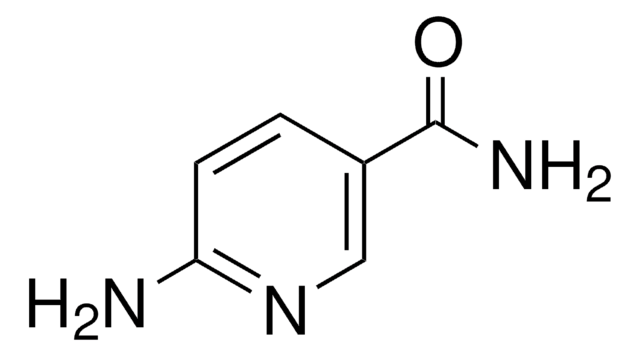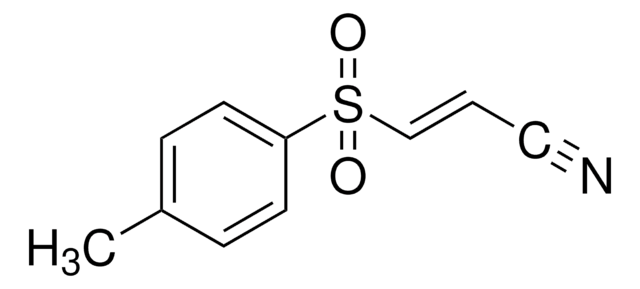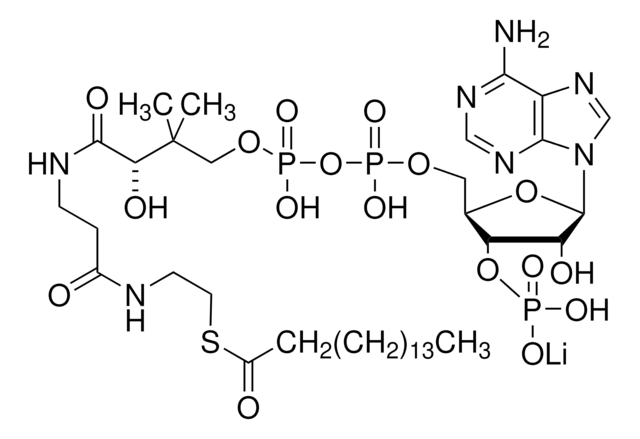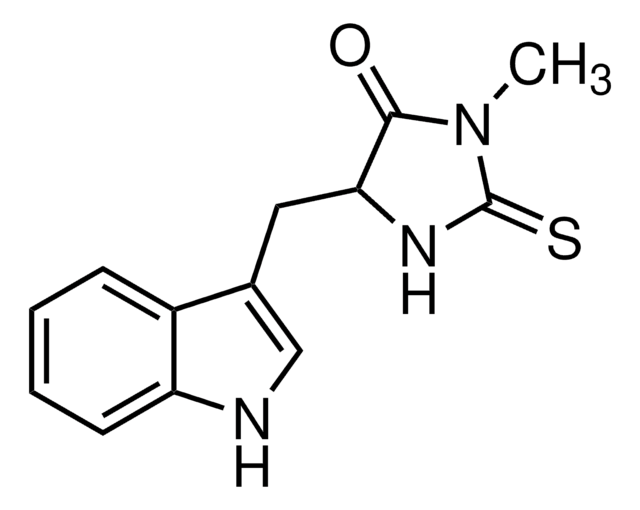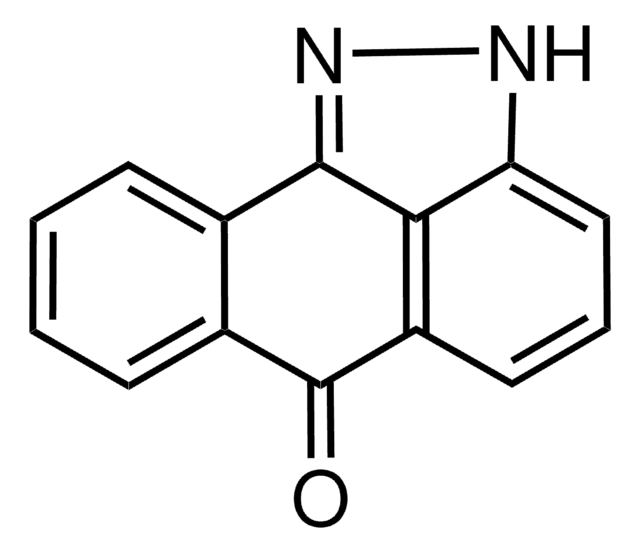Kluczowe dokumenty
O9890
5Z-7-Oxozeaenol
≥98% (HPLC), powder, TAK1 inhibitor
Synonim(y):
C 292, F 152, FR148083, L 783279, LL-Z1640-2
About This Item
Polecane produkty
Nazwa produktu
5Z-7-Oxozeaenol, ≥98% (HPLC)
Poziom jakości
Próba
≥98% (HPLC)
Formularz
powder
kolor
white to off-white
rozpuszczalność
DMSO: >10 mg/mL
temp. przechowywania
2-8°C
ciąg SMILES
COc1cc(O)c2C(=O)O[C@@H](C)CC=CC(=O)[C@@H](O)[C@@H](O)C\C=C\c2c1
InChI
1S/C19H22O7/c1-11-5-3-7-14(20)18(23)15(21)8-4-6-12-9-13(25-2)10-16(22)17(12)19(24)26-11/h3-4,6-7,9-11,15,18,21-23H,5,8H2,1-2H3/b6-4+,7-3-/t11-,15-,18+/m0/s1
Klucz InChI
NEQZWEXWOFPKOT-BYRRXHGESA-N
Zastosowanie
- as transforming growth factor β-activated kinase 1 (TAK1) inhibitor to treat human colon cancer cells
- as TAK1-specific inhibitor to provide intraperitoneal injection to mice for aortic banding
- as TAK1 inhibitor to treat cells for luciferase reporter assay
- to test growth and differentiation factor 2 (GDF2)-mediated anoikis
Działania biochem./fizjol.
Cechy i korzyści
Kod klasy składowania
11 - Combustible Solids
Klasa zagrożenia wodnego (WGK)
WGK 3
Temperatura zapłonu (°F)
Not applicable
Temperatura zapłonu (°C)
Not applicable
Wybierz jedną z najnowszych wersji:
Masz już ten produkt?
Dokumenty związane z niedawno zakupionymi produktami zostały zamieszczone w Bibliotece dokumentów.
Klienci oglądali również te produkty
Produkty
The extracellular signal regulated kinase (ERK1 and ERK2) pathways are activated by mitogens and play an important role in controlling cell growth and differentiation.
The mitogen-activated protein kinase (MAPK) family consists of both stress activated (SAPK) and mitogen-activated (MAPK) protein kinases. They form a network of signal transduction cascades that mediate cellular responses to a diverse range of stimuli, including growth factors, chemical or osmotic stress, irradiation, bacterial infection and proinflammatory cytokines.
Nasz zespół naukowców ma doświadczenie we wszystkich obszarach badań, w tym w naukach przyrodniczych, materiałoznawstwie, syntezie chemicznej, chromatografii, analityce i wielu innych dziedzinach.
Skontaktuj się z zespołem ds. pomocy technicznej
